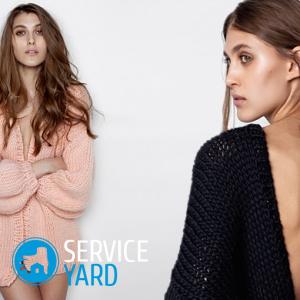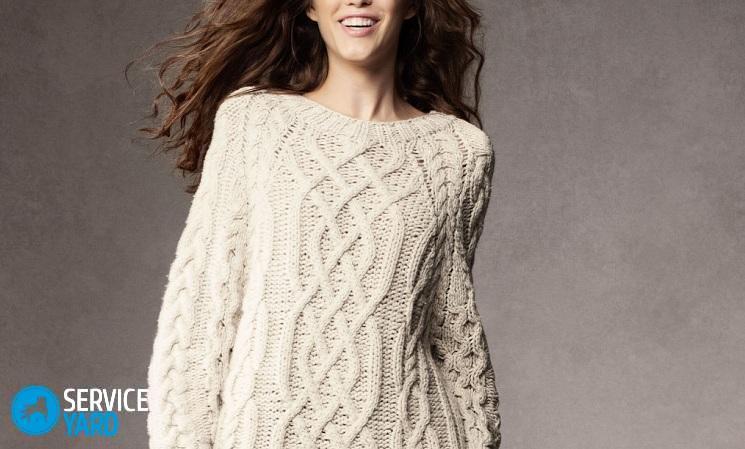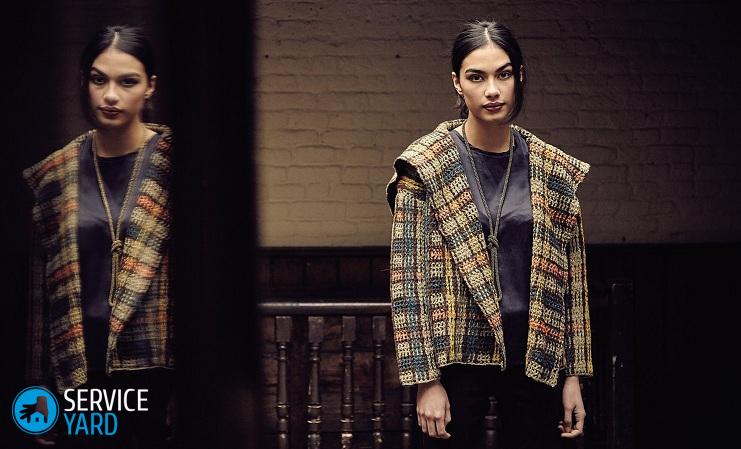Designer Knitwear

From year to year, all women are haunted by the idea of how to be the most beautiful and fashionable. To date, the stores have a lot of all kinds of clothes, different styles and colors. But despite the variety, all things are almost similar to each other, as if sewn according to a pattern. There is a solution to this problem - designer knitwear. Knitted or crocheted clothing has always been a success among women and men. And at the moment, the assortment of yarn has become more diverse, so you can knit whatever your heart desires - from socks to a cardigan. In addition, you can create your own unique thing, which you are unlikely to meet anywhere else. The main thing is to learn how to knit and master the techniques of such needlework. You should familiarize yourself with the types of threads for knitting. We will deal with all this in this article.
to contents ↑Types of Yarn
Yarn is created from threads, and threads from fibers. Fibers can be either natural or artificial. Before the fiber turns into a thread, it undergoes a lot of different treatments - from cleaning to twisting. Yarn can be made from fibers of the same type or from impurities, depending on what will be knitted from it. For example, impurities are added to some types of yarn to increase elasticity.
Let's look at a few examples of natural fibers:
- Wool - this type of material is made from sheep's wool. It retains heat for a long period of time. Often it is used for knitting scarves, socks and hats.
- Cashmere is a thin fluff of alpine goats of cashmere breed. The material is very exquisite and delicate, therefore its cost is quite high. Each fiber of such material is thinner than a human hair. That is why, in contact with it, an impression of lightness and tenderness is created.
- Angora is the fluff of Angora rabbits. The coat is very soft, fluffy and warm. With proper care, the product from Angora can last more than one year. Wash sweaters from such wool is recommended only chemically with extreme caution.
- Silk - extracted from cocoons of silkworms. The length of one silk thread is approximately 1000 m. Due to the fact that this raw material is not so easy to extract, it is very expensive on the market. In most cases, natural silk threads are combined with other types of yarn.
- Cotton is a fiber of plant origin. The material has good hygienic properties and thermal conductivity. Very strong raw materials and quite affordable. However, cotton yarn is often subjected to strong creasing and adverse effects of light.
Let's look at some examples of synthetic fibers:
- Microfiber - consists of polyamide fibers and other polymers. The material got its name because of its small thickness. Such fibers are used in the manufacture of fabric and knitwear.
- Acrylic - is made from ethylene. Such fibers are very stiff, unlike other artificial yarns. It is very easy to paint in bright colors. In addition, it is not susceptible to attack by insects (moles).
- Nylon - refers to light and at the same time strong fibers. It is used to create knitwear. It has a very high elasticity. Socks are often knitted from it.
- Metallic - this type of raw material is used as decoration. If you knit a sweater or scarf only from this raw material, then as a result it will be very uncomfortable to wear.Therefore, such yarn is combined with other types of raw materials.
Important! There is blended yarn, that is, several types of raw materials are combined to achieve the best result at the end of knitting of a particular product. In simple terms, then synthetic yarn is added to natural yarn to add shine or elasticity.
From such a wide assortment of yarn, you can choose any of them. The main thing is to consider your own preferences and desires.
to contents ↑Popular knitting techniques
Experts analyzed a lot of knitting techniques for designer things and identified some of the most popular ways. Let's consider them in more detail:
- Patterns of Spit and Arana - sweaters, pullovers and tunics, made in this technique, are now at the peak of popularity. They adorn female silhouettes with their volume and originality.
- Large knitting - products knit very quickly. Many needlewomen create sweaters and tunics in a matter of days. Products are dense and very neat.
- Jacquard knitting - multi-colored ornaments and patterns are meant. Such a pattern can be made on the whole product or only at the bottom. Colors are selected in accordance with the main shade. It all depends on the preferences of the needlewoman.
- Hole technique - a new direction in knitting. Suitable for creating spring and summer products. Usually in this technique knit vests and cardigans, as well as various T-shirts. Holes in products create very beautiful geometric shapes and stripes.
- Application - drawings are already embroidered on a ready-made pullover or sweater. Often, embroidery uses floss thread or other synthetic smooth threads.
- Fur - patches of faux fur are sewn into finished knitted coats. It looks very original and unusual. Sew fur rags manually, with a needle and thread into the color of the product.
You can choose any knitting technique you like. But first, it’s better to choose the lightest one to fill your hand a little.
to contents ↑Master class: knitting a men's sweater in the technique of "Jacquard"
In order to link such a model, you will need:
- Sheep wool (yarn) - 50 g.
- Wine - red thread - 150 g.
- White threads - 100 g.
- Melange Anthracite Yarn - 750 g.
- Knitting needles - 4,5 and 5;
- 40 cm circular knitting needles.
Jacquard pattern
Knit according to the pattern in jacquard technique, following these tips:
- In the wrong rows we knit with threads of the corresponding colors of the previous row.
- We knit each red rhombus from a separate ball.
- When changing colors in each row, the threads cross on the wrong side to avoid the formation of unnecessary holes.
- We embroider white rhombuses with a loop stitch according to the pattern.
- We distribute the loops as described in the instructions.
- In height, constantly repeat the 1–60th rows.
Decorative decreases:
- Right edge: we knit two loops so that they are together with the front side.
- Left edge: we knit two loops with a slope to the left (we remove one loop, as with facial knitting; then we stretch the removed loop through the edge).
Back:
- On the knitting needles we collect anthracite thread 102 loops for the strap, starting with the wrong row.
- We knit 4 cm (11 rows with an elastic band).
- Then we knit with needles No. 5 according to the pattern, while between the edge loops we make a rapport of 50 loops.
- After 106 rows from the plank, close on both sides for bevels, then in each second row 1 loop.
- After 58 rows from the beginning of the bevels, close the remaining loops.
Before
We knit like a back, but for the neck we close the middle 12 loops:
- At a height of 46 rows from the beginning of the bevels, we finish the left side.
- On the inner edge for further rounding in every second row, close 1 x 3 loop, 1 x 2 loop and 3 x 1 loop.
- After 12 rows from the beginning of the neck, close the remaining 2 loops.
- We finish the other side in the same way.
Sleeves:
- On knitting needles with anthracite thread we collect 62 loops for each sleeve, starting from the wrong side we knit 11 rows with an elastic band.
- We knit with needles according to the scheme, while distributing the loops as follows: we make edge 30 loops, and then another 30 free ones.
- For bevels on both sides, in the 9th row from the bar, add 1 loop and then in each 8th row another 1. After 106 rows from the bar, we sew the bevels, as described for the back.
We assemble the product:
- We embroider the buttonhole stitch along the white lines in the pattern.
- Next, we perform the seams of the sides and sleeves.
- For the collar along the neck of the back, we collect 30 loops on circular knitting needles, and 40 loops along the neck of the front, 14 loops along the upper edges of the sleeves.
- Loops close in a circle and knit 72 round rows with an elastic band.
- Then loops freely close.
Thus we get a very beautiful pullover in size 50-52.
to contents ↑Stock footage
We gave you only 1 example of a unique knitwear, you can start with simple products. And having honed your skills in different patterns and patterns, combine them, creating original products according to your ideas.
- How to choose a vacuum cleaner taking into account the characteristics of the house and coatings?
- What to look for when choosing a water delivery
- How to quickly create comfort at home - tips for housewives
- How to choose the perfect TV - useful tips
- What to look for when choosing blinds
- What should be running shoes?
- What useful things can you buy in a hardware store
- Iphone 11 pro max review
- Than iPhone is better than Android smartphones





